DC voltage converters
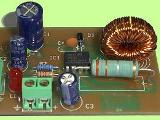 Speaking about the conversion of electrical energy, one can recall various transformers, generators, power supplies for various household appliances, chargers for electronic gadgets, welding inverters and even nuclear power plants. In all cases, the transformation of electrical energy occurs in one form or another. We can say that in everyday life we are surrounded by various types of electrical converters and it is difficult to imagine their complete absence in the modern world.
Speaking about the conversion of electrical energy, one can recall various transformers, generators, power supplies for various household appliances, chargers for electronic gadgets, welding inverters and even nuclear power plants. In all cases, the transformation of electrical energy occurs in one form or another. We can say that in everyday life we are surrounded by various types of electrical converters and it is difficult to imagine their complete absence in the modern world.
DC/DC converters have become particularly common in the last twenty years. This is due to the rapid development of the semiconductor industry and electronics in general.
High-frequency pulse converters have almost been pushed out of the market by low-frequency transformer power supplies, which can now only be found in old televisions and other antique devices or in some modern audio amplifiers.
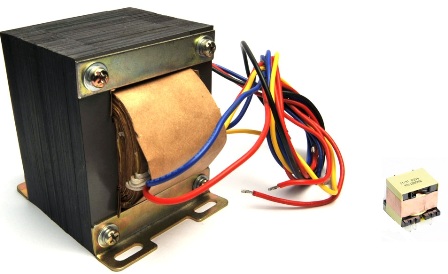
The high-frequency transformer (or choke) has a much smaller size than the low-frequency iron transformer designed to operate from a 50-60 Hz network, which is why switching power supplies are so compact.One way or another, DC / DC converters still contain a transformer (or choke) in their design, but it is not at all such a heavy and noisy transformer.
The range of modern DC-DC converters (namely, the so-called DC-to-DC voltage converters) is quite wide. Let's take a closer look at what exactly DC-DC converters are.
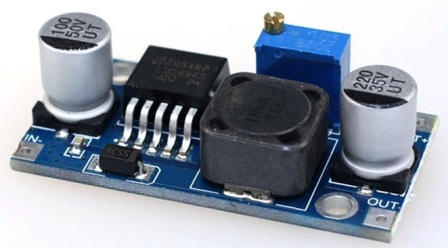
1. Miniature Adjustable Transducer
This small 43mm x 21mm converter and similar models are priced at $1 or more in Chinese markets. This instance runs an LM2596 chip, and its output parameters can be adjusted. A DC voltage in the range of 4.5 to 40 volts is applied to the input, and a DC voltage of 1.3 to 35 volts is obtained at the output.
The maximum current that can be obtained from this converter is 3 amps, but in this case a heatsink is required, if the converter is used without a heatsink, the average current should not exceed 2 amps. The efficiency of such a converter can reach 92%.

This converter is assembled according to the buck converter topology and all its main components are visible on the board: input and output capacitors, suffocation, Schottky diode, regulating resistor and the microcircuit itself in a TO-263-5 package. The schematic above does not show a trim resistor, but there is one on the board.
Without this resistor, the circuit will not give more than 5 volts at the output, but if the feedback is not removed directly from the output capacitor of the filter, but through a voltage divider that has just been assembled here using this regulating resistor, you can significantly to extend the output voltage range as implemented on this board.
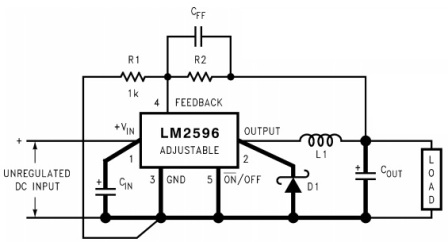
The scope of these converters is limited only by the imagination of the developer. Here you can power the LEDs and charge various portable devices and much more.
There are also boost converters of this type, made according to the topology of an increasing (amplifying) converter.
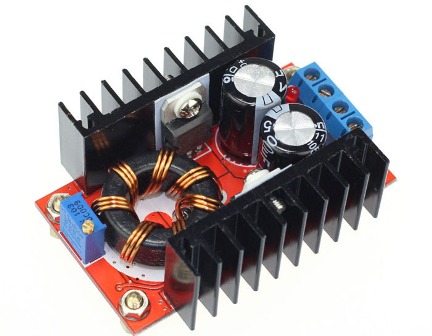
In the above image (red board) is an adjustable boost converter with a maximum power of up to 150 watts (additional cooling is required), whose input can be powered from 10 to 30 volts, and at the output from 12 to 35 volts.
As in the previous example, this converter has a regulating resistor at the output, which is responsible for obtaining the desired value of the output voltage. The control chip is located on the back of the board. The board itself measures 65mm x 35mm. The price of such a converter is 3 times higher than the previous example.
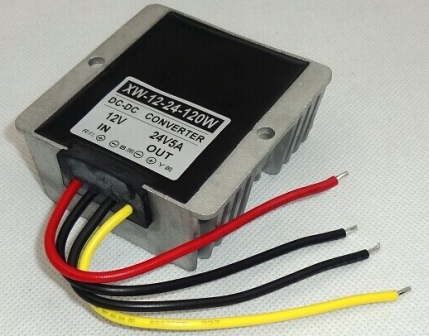
2. Waterproof power supply
This power supply has a rugged, waterproof, die-cast housing filled with epoxy, allowing it to be used in both transportation and any other equipment where reliability and safety are required. The inverter has overvoltage, overvoltage, short circuit and overload protection.
The input voltage range of the different models is very wide and in this example from 9 to 24 volts, while the output is 24 volts with a maximum current of 5 amps (in this example). The size of the box in the photo is 75mm x 75mm, the height is 31mm. The price of such converters is about 10 - 50 dollars, depending on the capacity.
Converters of this type are manufactured for power from 15 to 360 watts, for input voltages up to 60 volts and for output voltages from 5 to 48 volts. They are also quite common in many markets.
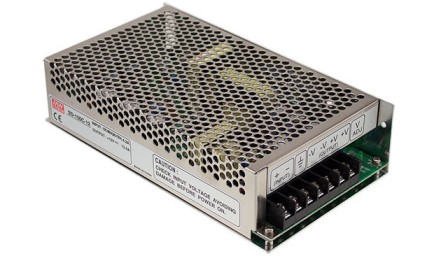
3. Switch DC power to the enclosure
Typically, these power supplies are made in accordance with a flyback, push-pull, or half-bridge switching circuit. They are available for input voltages from 19 to 72 volts and above, and the output is usually 5 to 24 volts. The power of converters of this type can reach 1000 watts. Case sizes from 78mm x 51mm x 28mm to 295mm x 127mm x 41mm.
These power supplies are available from many manufacturers and can cost up to several hundred dollars. Quite often such devices are used to power LED strips. They have the ability to fine-tune the output voltage and have overload protection.
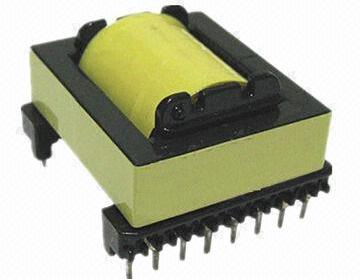
There are similar models of converters on the market that are powered directly from the alternating current network, the so-called AC-DC converters, but there, however, the network voltage is first rectified, filtered, that is, made constant, and only after it is converted by means of a standard high-frequency conversion and rectification into constant voltage at another level, lower that is, used again DC-DC converter module.
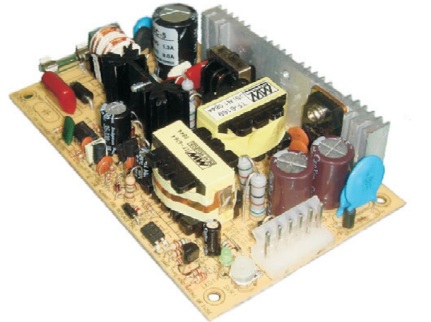
Unlike other converters, converters powered by an alternating current network necessarily have galvanic isolation of the secondary winding of the high-frequency pulse transformer from the primary... As a rule, the feedback loop in such units is isolated using optocouplers… In fairness, it should be noted that low-power units of this type are also available in a frameless design.
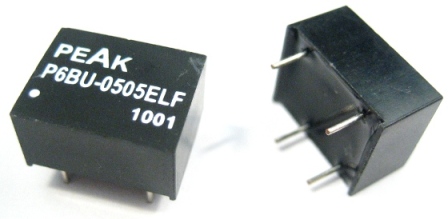
4. DC-DC converter for PCB mounting
These miniature power supplies range in power from 0.25 to 100 watts. They allow a range of input voltages: 3-3.6V, 4.5-9V, 9-18V, 13-16.6V, 9-36V, 18-36V, 18-72V, 36-72V and 36-75V.Depending on the manufacturer, the supply voltage ranges may differ. Some converters allow adjustment of the output voltage and placing the device in standby mode. The standard output voltage range of the blocks: 5V, 12V, 15V.
DC-DC converters for PCB mounting are electrically isolated (1500V), and the maximum allowable temperature can reach 90 degrees Celsius. Of greatest interest to developers are converters with a power of 3 watts. The cost of such converters varies from units to tens of dollars.
All modern industrial switching DC-DC converters operating frequency is above 50kHz and reaches 300kHz. This statement is true for pulse transformers and ferrite chokes, since ferrite cores are used everywhere for the transformers and chokes used in the converters described.
Industrial dedicated converter switching ICs very often have a strictly set frequency that is always above 50 kHz. If a PWM controller is used, then the corresponding frequency is set by external components.
